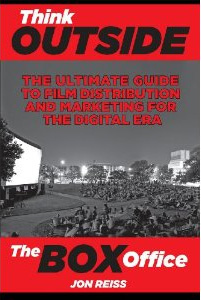First it was the music business, now the film industry is beginning to face a sustained assault on its traditional business models, and distribution is the main battleground. As audiences now demand more timely and flexible access to content, Big Media has given up on suing it’s customers in favour of a two-pronged attack: going after easier (and richer) targets, the ISPs; and flashing its cash around halls of government to try and influence policy and law-making to its own ends. Indie filmmakers might be forgiven for feeling a lot like collateral damage in this conflict. While the next Tom Cruise vehicle is unlikely to face any challenges in obtaining distribution, the already difficult task of successfully exploiting an independent film via traditional challenges is getting harder by the day.
Fortunately, there is light at the end of the tunnel. For indie filmmakers with a marketable product, there is a larger audience out there which is hungry for content, and for the most part, prepared to pay IF it is delivered in the right format, at the right time, and of course, for the right price. However for most filmmakers, learning their craft and getting the film made is a hard enough endeavour, let alone staying abreast of the current trends in alternative distribution. Fortunately, a new book from Jon Reiss, Think Outside the Box Office is just the tonic which may be needed.
Reiss is a successful filmmaker with a career in features, documentaries, shorts, and music videos which spans 30 years. He also teaches in the film directing program at the California Institute for the Arts. It is this background which has perhaps lent him to provide a clear and concise view of the digital distribution landscape as it stands today, and refreshingly devoid of much of the groundless hype which has crept into some of the more ‘evangelical’ proponents of digital distribution.
The book is grouped into eight logical sections, covering areas such as Live Events/Theatrical, Merchandising, Digital Rights (a minefield!) and Foreign Sales. While the first two sections cover the fairly bread and butter areas where many indie filmmakers fail (knowing your audience, researching your market etc), the book gets into full swing once it starts looking at strategies for getting your film out there sans distributor (but also in conjunction with a distributor where you can have a complimentary strategy in place.
The book wraps up with some pragmatic advice for keeping sane and embracing the future. Reiss isn’t claiming to have a crystal ball that will tell you how to guarantee great returns on any film, but his concise approach and down-to-earth style should give any indie filmmaker plenty of food for thought.






